In New York City—the tenth most expensive place to live in the U.S.—it can feel like good health is a luxury reserved for the elite.

Another day and I’m scrolling through Instagram. Like yesterday, I see no shortage of influencers harping on Botox, marketing pricey wellness procedures, and boasting expensive gym memberships. For the average Joe, these ideas are cute but unrealistic. Plus - how much do they really improve your health and wellbeing?
Over the past five years living in New York City, I’ve quietly been running my own experiment: What actually moves the needle when it comes to feeling better? Living with a chronic illness has made wellness more than just a lifestyle choice—it’s a necessity. While I’ve certainly tried my share of high-end services promising transformation, I’ve learned that healing doesn’t have to come with a luxury price tag. In fact, some of the most meaningful progress I’ve made has come from low-cost events, community-driven spaces, and affordable products—often discovered off the beaten path. These grassroots wellness hubs have not only supported my physical health but also reminded me that accessibility and community are just as vital as any treatment plan.
Before I share my favorite cheap health hacks, I have three disclaimers.
The first: personal wellness is complicated. There is no magic pill, and so my ideas aren’t magic pills, either. In a country where 12% of people have reportedly taken a GLP-1 inhibitor, today’s United States population looks for quick fixes over long-term lifestyle changes. It’s unlikely for one workout class, procedure, or product to make you wildly healthier, no matter the price. Ultimately, I hope these ideas serve as small but steady tools—easing stress now, and paving the way for deeper, long-term well-being.
The second: population health is complicated, too (shocking, right?). I see it play out every day at my medical research day job. Social determinants of health, or SDOH as we say at work, are non-medical factors that can influence an individual’s health and wellbeing. They include five key areas: economic stability, education access and quality, health care access and quality, neighborhood environment, and social and community context. Much of what determines health boils down to access to resources: money, education, food, time, movement. For example, people who don’t have close access to healthy foods, or don’t have funds to pay for them, are more likely to develop conditions like heart disease, diabetes, and obesity. And despite living in one of the wealthiest countries in the world, nearly 10% of Americans still lack access to basic healthcare. Millions more face challenges in receiving and paying for medical care.
The third: wellness is not a destination. It’s not a place you arrive at, but a state you move through—sometimes forward, sometimes backward. Which leads to the philosophical question of the week: Can you truly “find” something like wellness if it doesn’t exist as a fixed endpoint?
While it's important to acknowledge the glaring health inequities that disproportionately impact communities of color and those with lower socioeconomic status—and our very human desire for quick, effortless relief—there are wellness options that can be both fast and fun. In my view, these aren’t one-and-done solutions. Rather, they’re light, playful, and accessible ways to invite moments of relaxation, connect with others, and treat yourself—without draining your bank account.
Blissful Headspace Spa, Cobble Hill
Blissful is a Chinese head spa with two convenient Brooklyn locations, and their newly opened Cobble Hill spot—just a block from the Bergen St. F and G trains—has already become a personal favorite. I’ve visited twice in their first month, and each experience has been consistently impressive. The exterior is unassuming, but inside you’ll find a cozy, calming space with friendly staff and a small tea area to ease you into relaxation.
The real magic, though, lies in the treatments. I highly recommend the Steam Scalp Treatment and Massage, which costs $68 plus tip for a full 60 minutes. It begins with a deeply relaxing, pressure-point-focused scalp massage that feels like a literal caress for your nervous system. The therapist then uses a variety of tools to amplify the sensation—honestly, it’s euphoric. After a thorough shampoo, they massage your head, neck, and shoulders, followed by a gentle steaming of your scalp that feels heavenly (and even helped alleviate my allergies). You’ll finish with a quick Dyson blowout, if you want one, and a look at your freshly cleansed scalp through a magnifying camera—oddly satisfying.
The spa is generally quiet and soothing, with only the occasional soft conversation or street noise from Smith St. if the door’s ajar. The blowout holds for days, and the service is just a touch more expensive than a standard one—making it a smart, indulgent 2-in-1 wellness hack.
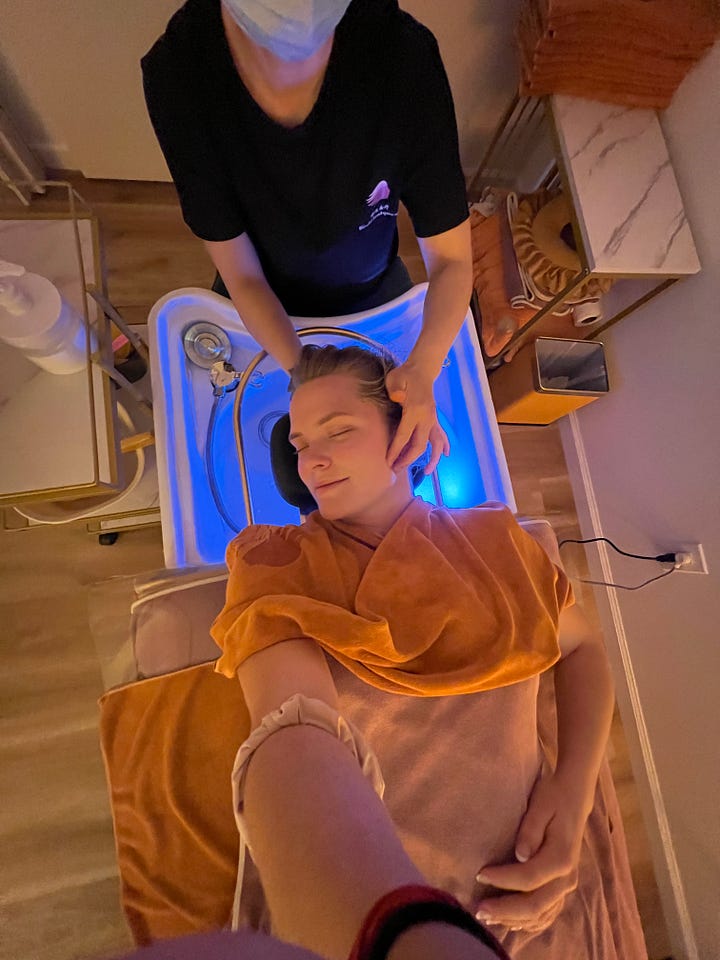
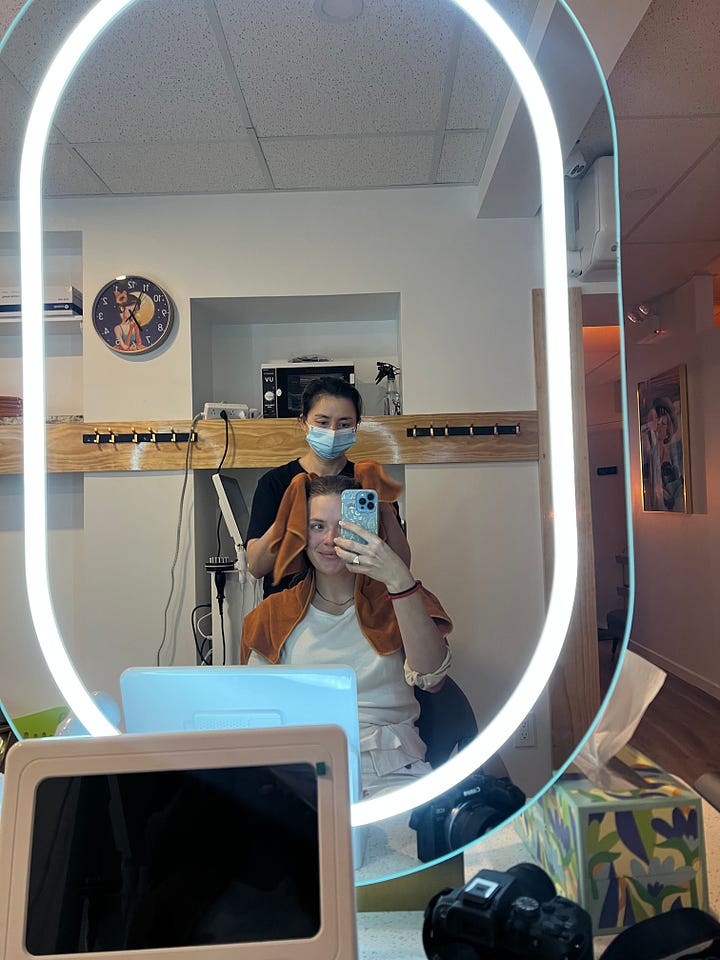
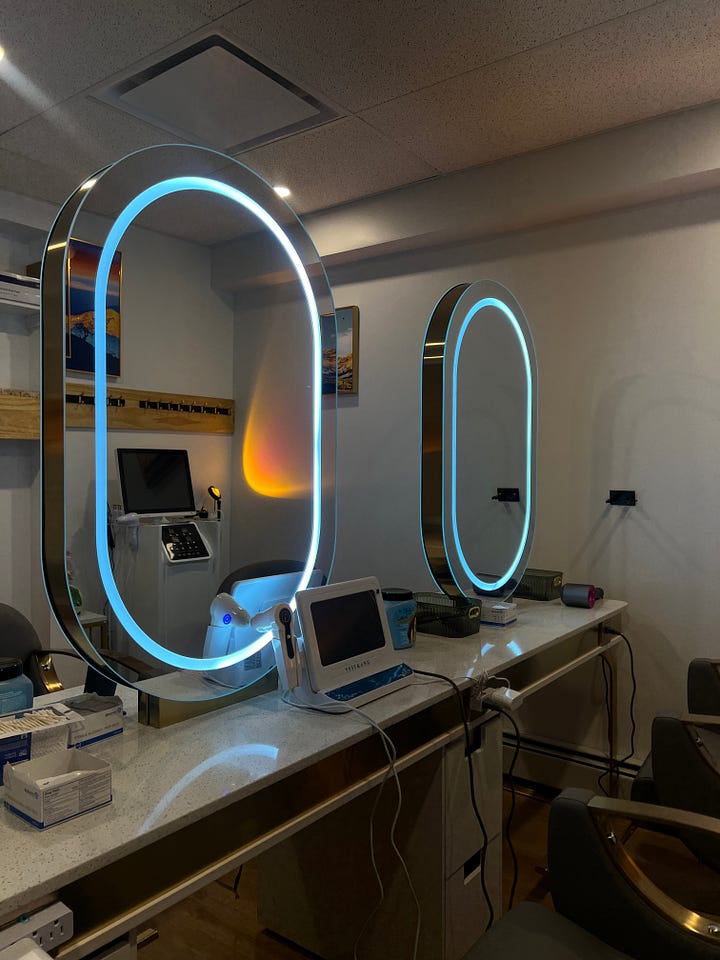
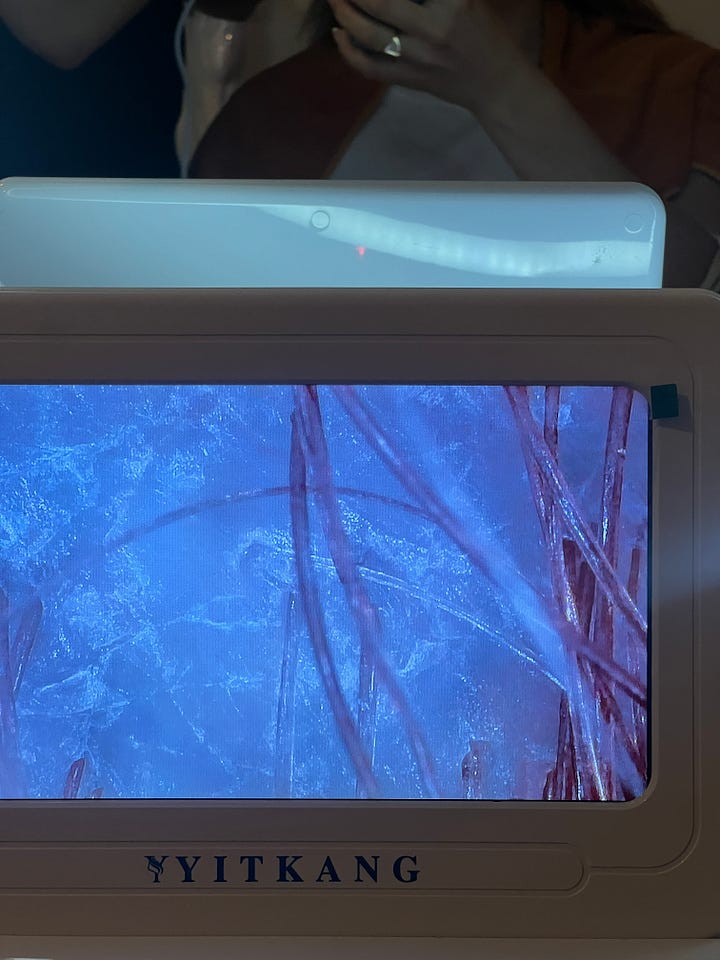
Maha Rose, Cobble Hill
Branded as “a space for transformation,” Maha Rose is a cozy, welcoming hub for those looking to dip into the more mystical side of wellness. It’s the perfect place to explore the woo-woo without breaking the bank. Despite its dreamy vibe, many of Maha Rose’s most luxurious offerings—like group reiki and movement medicine—are surprisingly affordable, often priced on a sliding scale. The space itself is serene and thoughtfully designed, with soft lighting, calming energy, and an abundance of cozy props that make every class feel like a gentle hug. Freshly brewed tea is served during each session, adding to the ritual-like feel of the experience.
One of my favorite offerings is their $45 group reiki class, which operates on a $35–$55 sliding scale. It’s a grounded, cost-effective alternative to the $300+ private reiki sessions you’ll find elsewhere in the city. They also offer $40 infrared sauna sessions, making this a go-to spot for accessible, soul-nourishing self-care.
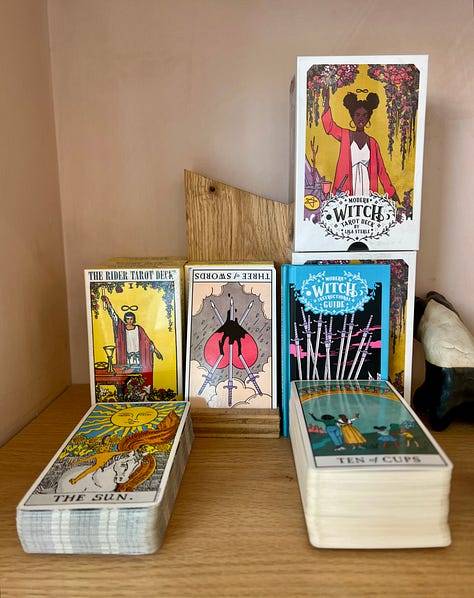
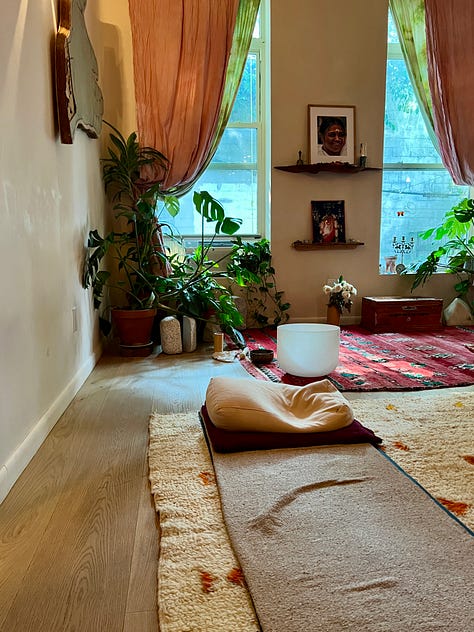
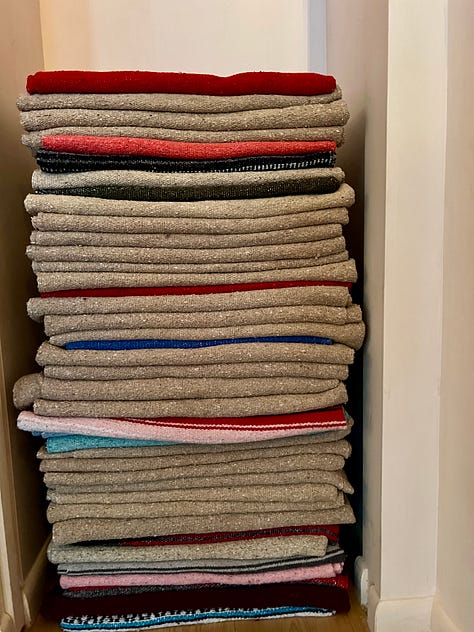
Acupuncture with Nan Yi Chun, East Village
Finding an outstanding practitioner who also takes insurance can feel like searching for a needle in a haystack. Nan Yi is that needle. Trained in Korea under the guidance of her herbalist grandfather and formally educated in acupuncture, she brings deep knowledge and intuitive skill to every session. She’s an incredible listener and has helped me manage everything from IBS and fatigue to allergies and immune overactivation. Her in-person energy is unmatched. More often than not, I leave her office drooling and disoriented—in the best possible way.
Thanks to her in-network status with my insurance, each session only costs me $25. To save you the search: as of this writing, she’s in-network with Aetna and UnitedHealthcare.
Run Clubs
I swear, run clubs are the heartbeat of this city. They’re usually free, always welcoming, and wildly diverse. And by diverse, I don’t just mean there’s one for men and one for women—big whoop. This is New York; we don’t do basic. Here, you’ll find a run club that smokes weed before jogging, one that partners with blind athletes, one for seriously slow runners (shoutout to Slow Girls Run Club), one for queer runners, one for entrepreneurs—the list goes on. Whoever you are, there’s a space for you. These clubs are full of motivated, active people and surprisingly tight-knit communities. Just Google your vibe—be it a personality trait, profession, or favorite snack—plus “run club,” and there’s a good chance something will pop up.
Tangerine Yoga, Downtown Brooklyn
When I first moved to Brooklyn, I stumbled upon Tangerine—a studio tucked right next to the A, C, and G trains—and I’m so glad I did. From day one, Tangerine impressed me with its grounded, community-driven vibe—something I’d been missing after years of practicing in the polished, performative studios of the West Village. Here, yogis show up in comfy t-shirts and well-loved leggings, not curated $200 Alo Yoga sets. There are no mirrors, which means no space for obsessing or comparing—just room to show up as you are.
Everything about Tangerine, from the environment to the class styles, encourages authenticity. My favorite instructors, Abigail and Liz, lead classes that feel sensual, intentional, and genuinely luxurious. Unlike many fitness classes, theirs don’t revolve around performance—it’s impossible to “fail.”
While the price point is notable—$35 for a drop-in or $225/month for unlimited classes—it’s well worth it if you’re seeking a meaningful, embodied experience. New students can take advantage of the $99 first-month unlimited offer, which is a great way to explore different instructors and class types.
If you want to elevate your experience, aim for classes with assistants. You know those incredible hands-on adjustments that you quietly hope for? When assistants are present, you’ll receive even more of them, making each class feel extra indulgent. Pro tip: email the studio to find out which upcoming classes have assistants. Trust me—it’s worth the $35.
Chinatown Massages
Chinatown is an underrated goldmine for low-cost, no-frills wellness—especially when it comes to massages. Nearly every block is dotted with spots offering 30-minute treatments for around $30, making it one of the best neighborhoods in the city for affordable self-care. My current favorite? Taiji Energy Spa.
Last Sunday, I wandered in and had what can only be described as a near-religious experience—though probably not the kind those deep Southern Christians are referring to. I opted for the 45-minute foot massage with hot stones ($35 + tip), and my Garmin literally thought I had fallen asleep. I don’t know much about the masseuse—just that he had long hair and completely rocked my world.
10/10. Highly recommend.
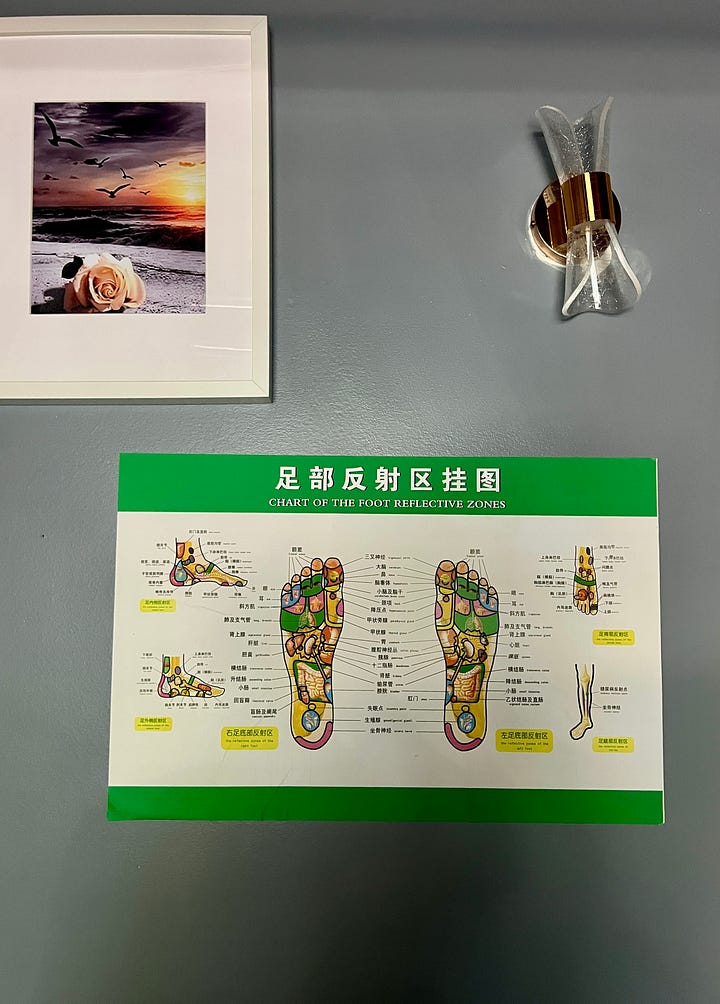

Wellness Class Events
New York is packed with wellness events, often promoted by your favorite Instagram fitness coaches, wellness collectives, and Substackers (like
). The best events blend a solid workout with a social vibe—think networking sessions or group hangouts—and usually come with a stacked goodie bag.Last weekend, I attended a Pilates event hosted by GLO, a women’s wellness group. For $36, the ticket was a steal compared to most Pilates classes in the city—and it included a challenging workout, fresh juice, and a generous goodie bag. What I love most about these wellness events is not just the value, but the chance to connect with other active women.
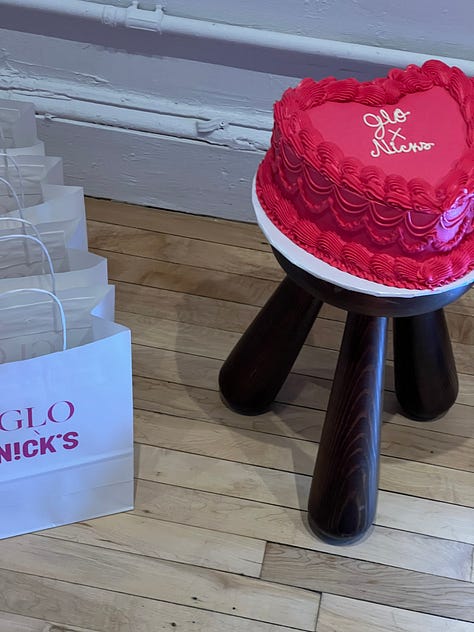
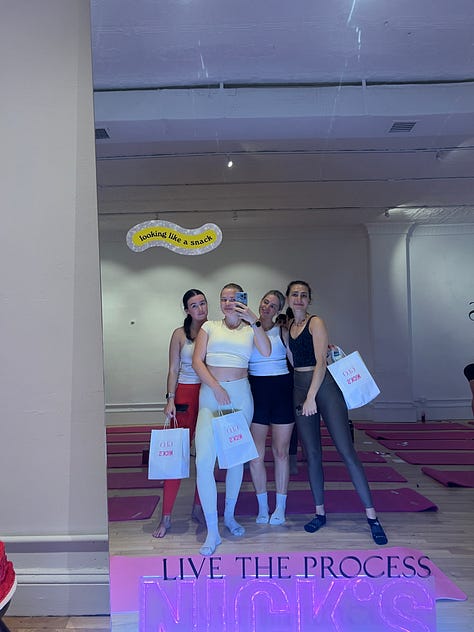
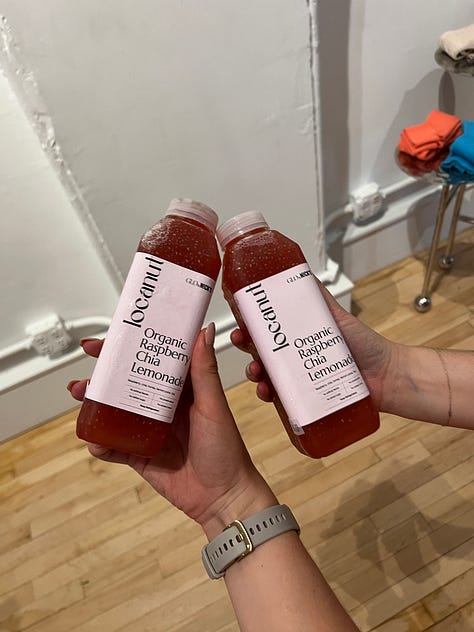
Othership, Flatiron
You might have heard of Othership, the viral Canadian bathhouse sensation founded in Toronto. This luxurious wellness haven offers both guided and unguided classes designed to lead you through their expansive dry sauna and invigorating ice baths—all enhanced by soothing aromatherapy. I especially recommend their guided sessions, particularly those with Marty, as well as their more affordable off-peak free-flow classes. While typical classes run around $60 each, savvy visitors can often snag significant discounts on off-peak sessions through ClassPass. Also, this link will get first timers 2-for-1 classes. Code HANNAHCHRISTIAN gets all clients $$ off.
In a city that makes it damn near impossible to support your nervous system, what tmoves your needle toward health?
Thanks for reading No Notes. Subscribe for free to receive new posts and support my work.
I appreciate you and your reading and sharing of this Substack. If you liked reading this, click the ❤️ button below so others can find me.
x Hannah




This is a great list. If you have a chance, Mermaid Spa in Seagate is a fun destination. It’s about ~$50 for a day pass. There are 3 different banyas, 2 steam rooms, and amazing cold plunges that make for a lovely water cycle. Most folks speak Russian and are warm to newcomers.
I love this round-up and slyly emailed my husband the name of that head spa. Thanks for sharing!
Like Othership, have you tried Remedy? Their breathwork class with AJ sent me to the moooooon.